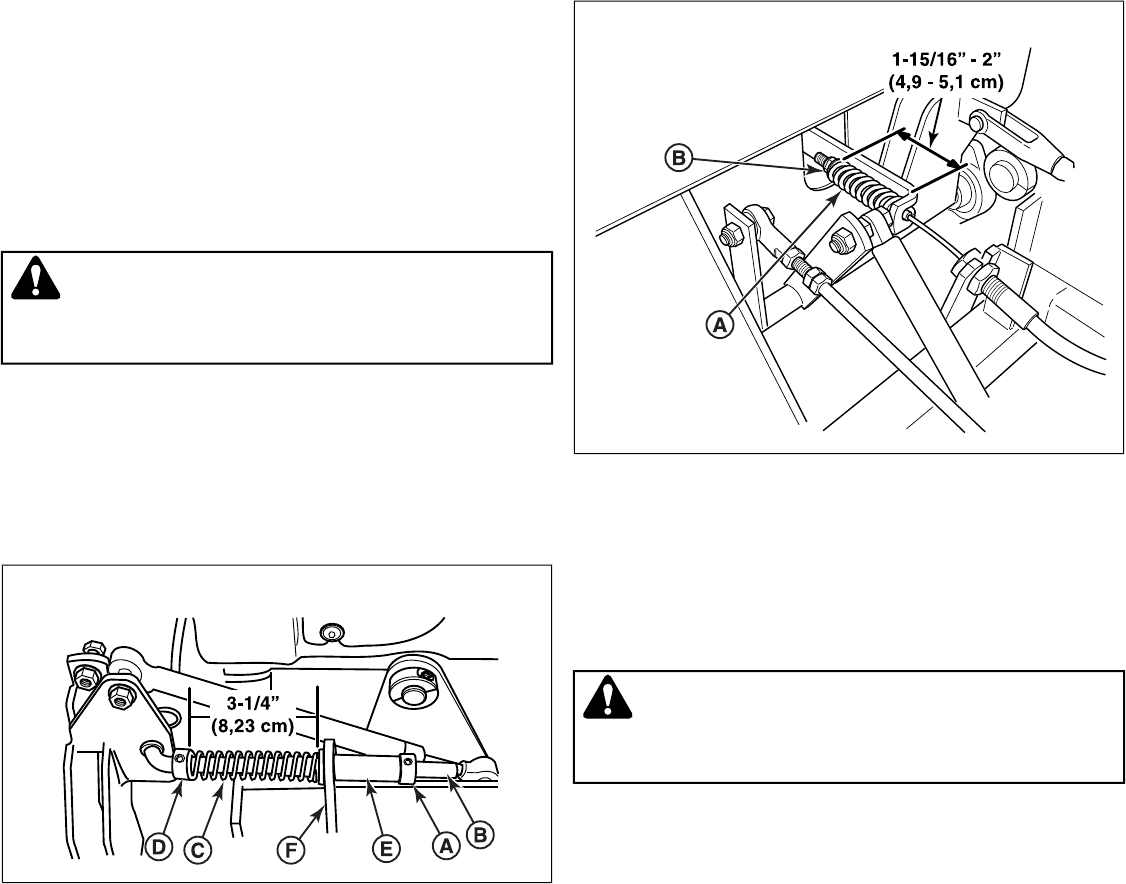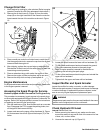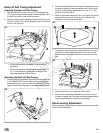
• If the machine creeps backward, turn the rod
counter-clockwise.
3. Lock the jam nut agains the ball joint when neutral is
achieved.
NOTE: This adjustment should not be performed while the
machine is running. It may take several attempts to achieve
neutral, depending on how much the machine creeps.
Return-to-Neutral Adjustment
Determining If Adjustment is Necessary
To determine if it is necessary to adjust the neutral return, perform
the following steps.
1. Disengage the PTO, engage the parking brake and turn off
the engine.
2. Move the ground speed control levers into the operating
position, pull rearward and release.
3. Move the ground speed control levers out towards the
NEUTRAL position.
• If the levers align with the notches in the neutral lock
plate, no adjustment is necessary.
• If the levers do not align with the notches in the neutral
lock plate, adjustment is necessary.
Adjustment - Cotter Pin Fastened Neutral Return
Rods
WARNING
To avoid serious injury, perform adjustments only with engine
stopped, key removed and tractor on level ground.
1. Lock the ground speed control lever in the neutral position.
2. Measure the length of the neutral return spring (C, Figure
39) it should be set at 3-1/4” (8,23 cm). If the spring does
not measure 3-1/4” (8,23 cm) loosen the front set collar (D)
and the rear set collar (A), then move the front set collar
forward or back on the neutral return rod (B) until the spring
length equals 3-1/4” (8,23 cm). Retighten the front set collar.
39
3. Make sure that the neutral return bushing (E) is seated
correctly in the spring stop plate (F).
4. Position the rear set collar so that it sets tightly against
neutral return bushing and tighten.
5. Pull the ground speed control lever rearward and release to
check position again. Adjust as necessary to align the ground
speed control levers with the notches in the neutral lock
plate.
NOTE: It is important to note that after every adjustment of the
neutral return rod, the lever must be pulled rearward and released
to properly check the neutral position.
Parking Brake Adjustment
1. Disengage the PTO, engage the parking brake, stop the
engine and remove the ignition key.
2. Raise the seat plate.
3. Locate the parking brake springs (A, Figure 40).
40
4. With the parking brake engaged, measure the compressed
spring length. The spring should measure in the range of
1-15/16" - 2" (4,9 - 5,1 cm) when compressed.
5. If the spring is not within this range release the parking brake
and turn the adjustment nut (B) to compress or release the
spring.
6. Engage the parking brake and re-measure spring.
CAUTION
Do not adjust the spring to be shorter than 1-15/16" (4,9 cm)
when compressed. This may damage the brake mechanism.
If this does not correct the braking problem, see your
dealer.
28 ferrisindustries.com
Not for
Reproduction


















